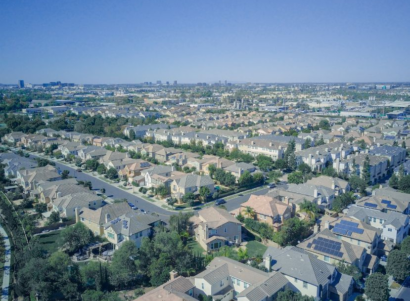Background
The United States has seen reductions in air pollution emissions from various sources since the enactment of the Clean Air Act (CAA) in 1970. These declines have contributed to substantial improvements in air quality nationwide, however, studies show that racial and/or ethnic and socioeconomic inequities in exposure to air pollution persist across the U.S. despite the nationwide downward trend in air pollution.
This peer-reviewed study, published in Nature Communications, evaluates county-level racial/ethnic and socioeconomic disparities in air pollution emissions changes in the contiguous U.S. from 1970 to 2010. The researchers modeled associations between county-level demographics and the decennial relative change in emissions within the transportation (nitrogen oxides [NOx]), agriculture (ammonia [NH3]), residential (particulate organic carbon), commercial (NOx), industry (sulfide dioxide [SO2]), and energy (NOx and SO2) sectors.
Key Findings
The researchers found racial/ethnic disparities in emissions changes, particularly in the industry and energy sector. Socio-demographic characteristics of counties were associated with the county-level relative changes in air pollution emissions from 1970 to 2010.
- Scientists found prominent socioeconomic disparities in the emissions changes from the energy generation sector. An increase in the county median family income was associated with an increase in the magnitude of NOx and SO2 relative emissions reductions. Whereas an increase in the percentage of American Indian, Asian, or Hispanic population in a county resulted in a decrease in the magnitude of NOx emissions reductions related to the energy sector.
- Results from the research also show that an increase in county median family income leads to an increase in the magnitude of NOx emissions reductions from the industry source sector.
- Researchers also found that emissions changes from the commercial, residential, and transportation source sectors were dependent on counties median family income with an increase in income resulting in an increase in the magnitude of emissions reductions.
Conclusions
The results from this research suggest that although it is not universal, there are racial/ethnic and socioeconomic inequalities in the reduction of air pollution emissions following the CAA. In addition to other factors, such as historical racism in land distribution, results from this research suggest inequities in emissions reductions could contribute to persistent air pollution exposure disparities. It is important to incorporate environmental justice strategies in air quality policies in order to mitigate existing disparities and prevent future ones. Equitable emissions decreases, i.e., greater reductions for overburdened groups, can then facilitate a more just reduction of air pollution concentrations.

 Study
Study 






